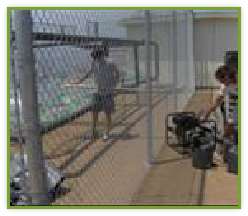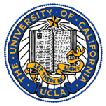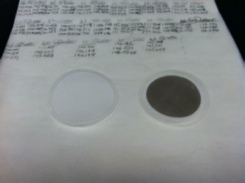



Atmospheric Chemistry of Aerosols
Climate, Health and Formation

Highly Spatially Resolved Measurements and Analysis of Pollutants in Urban Areas
Paulson@atmos.ucla.edu
Professor Suzanne Paulson

Reactive Oxygen Species Associated with Urban Aerosols
Recent epidemiological studies have shown a strong relationship between particulate pollution and health outcomes, including mortality. Determining the ‘causative agent’ in particles responsible for damaging health is the subject of increasing study, but many questions remain.
Reactive oxygen species, including hydrogen peroxide, are candidates for part of the adverse health effects caused by particle inhalation.In this project, aerosol borne oxidants are being characterized, investigating the relationship between these toxic compounds and location, source type, aerosol type, and photochemical activity. Additionally, laboratory studies on model systems are underway to determine the source and behavior of peroxides in aerosols.
Projects
Optical Properties and Measurement Uncertainties of Black and Organic Carbon Aerosols
Black carbon and organic carbon aerosols have substantial effects on the Earth’s climate, yet because of large uncertainties in both the optical properties, mass measurements and emissions of these materials, their impacts cannot be quantified with any accuracy.
We are studying a series of model aerosols generated under realistic conditions using small engines and photochemical smog in a roof-top Teflon reaction chamber (shown at left). Aerosols are characterized with an extensive suite of techniques including in situ optical and off-line optical to off-line mass and composition analyzers.
Polar Nephelometer
A new, light, rugged instrument to measure angular scattering is being developed, verified, and applied. Refractive index data is being retrieved from the data using a genetic algorithms approach.

Aerosol Optical Properties
We are studying a series of model aerosols generated under realistic conditions using small engines and photochemical smog in a roof-top Teflon reaction chamber (shown at left). Aerosols are characterized with an extensive suite of techniques including in situ optical and
off-line optical to off-line mass and composition analyzers.
Polar Nephelometer: A new, light, rugged instrument to measure angular scattering is being developed, verified, and applied. Refractive index data is being retrieved from the data using a genetic algorithms approach.


Exposure to pollutants in urban environments depends strongly on time and location. Pollutant concentrations result from the complex interplay of variable emissions sources, highly variable atmospheric stability and mixing, and features of the built environment, such as building heights and spacing. Using fast time-response instruments and innovative sampling designs, we probe features of urban environments that control pollutant concentrations in the real world. Using various statistical and analytical models, we strive to push the underlying science forward and inform policies surrounding the design of a healthy built environment. Photo credit: California ARB

